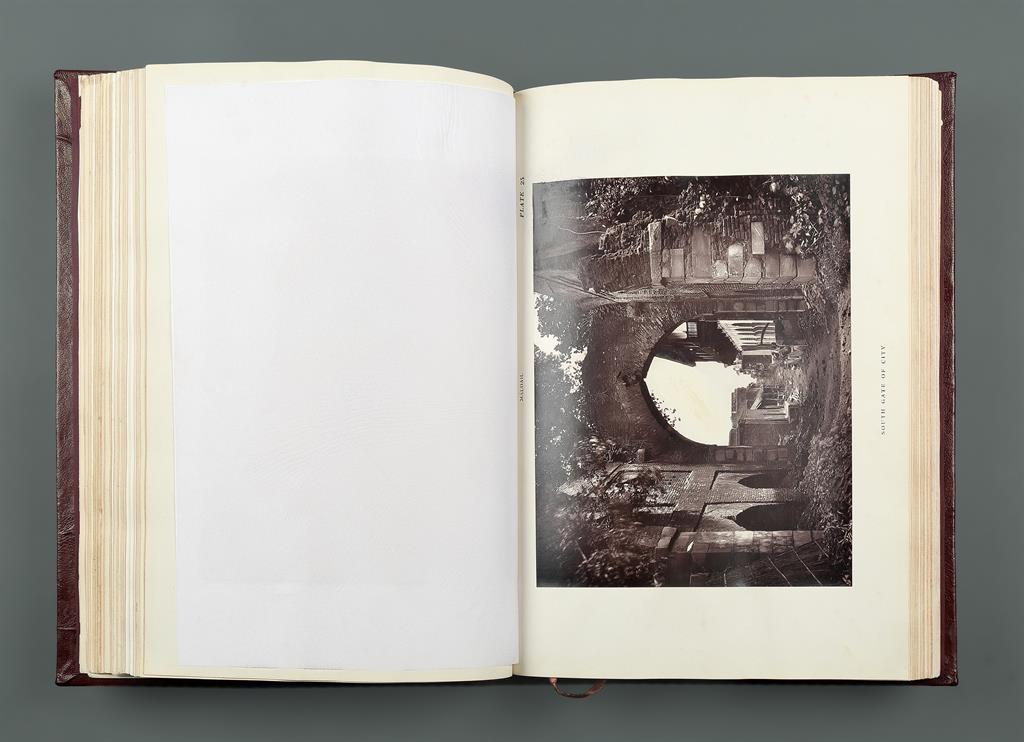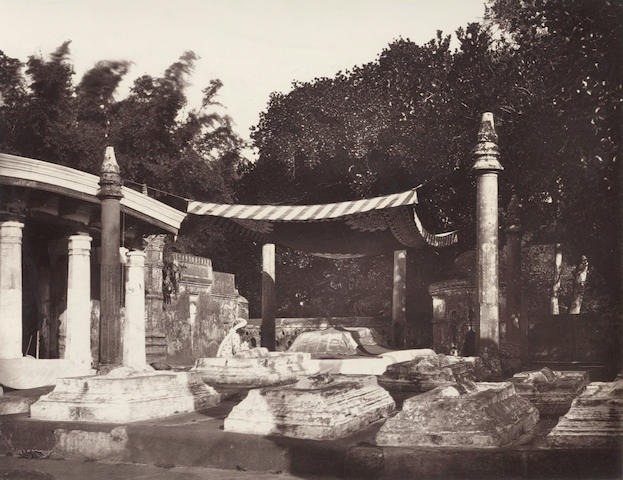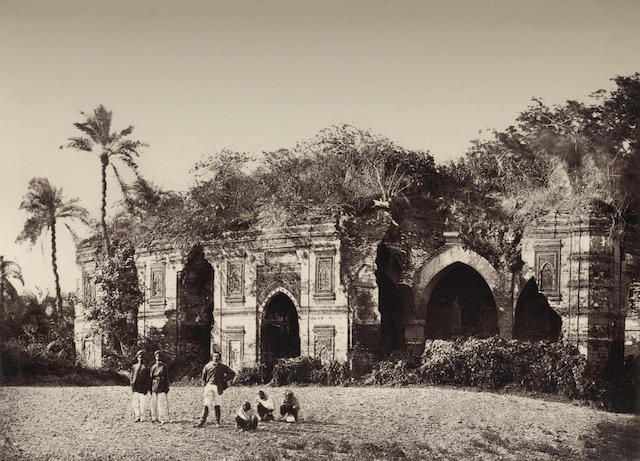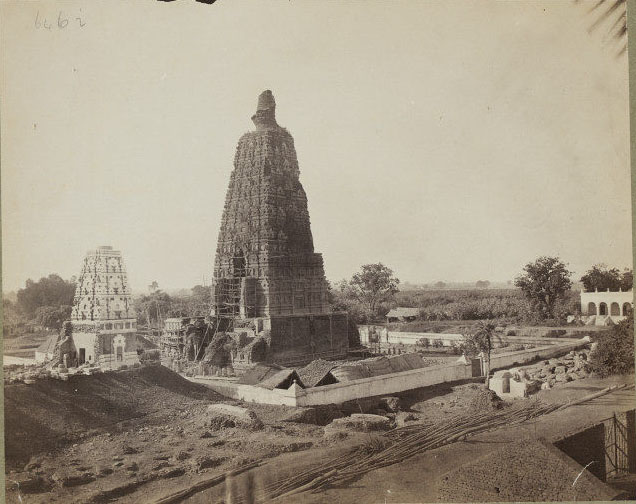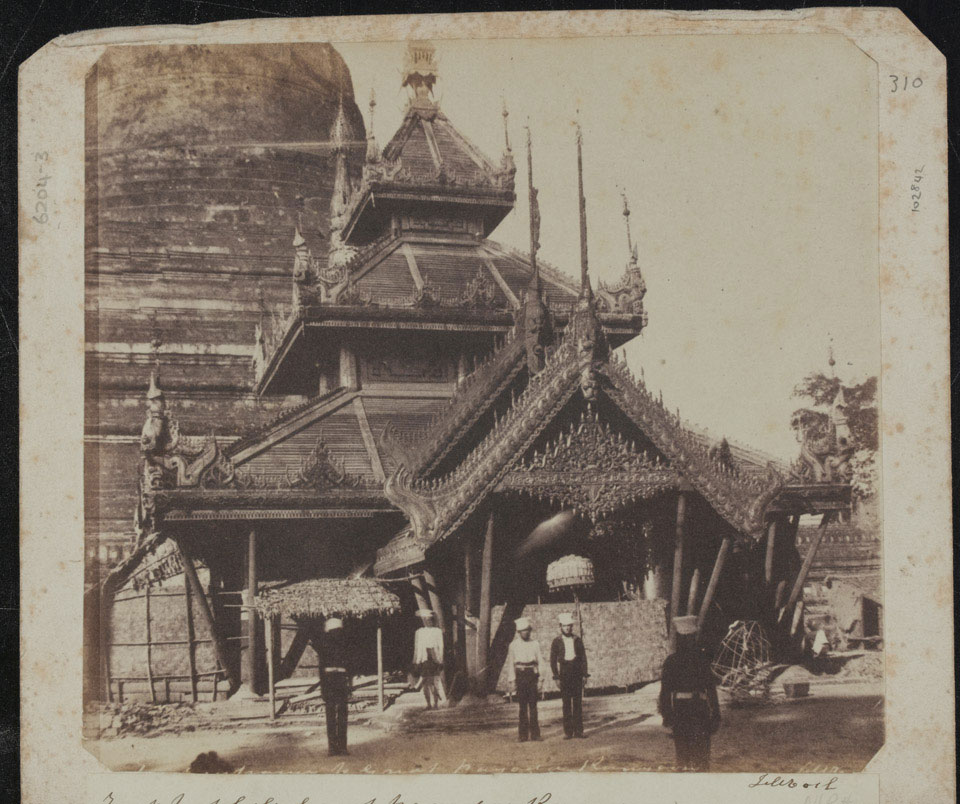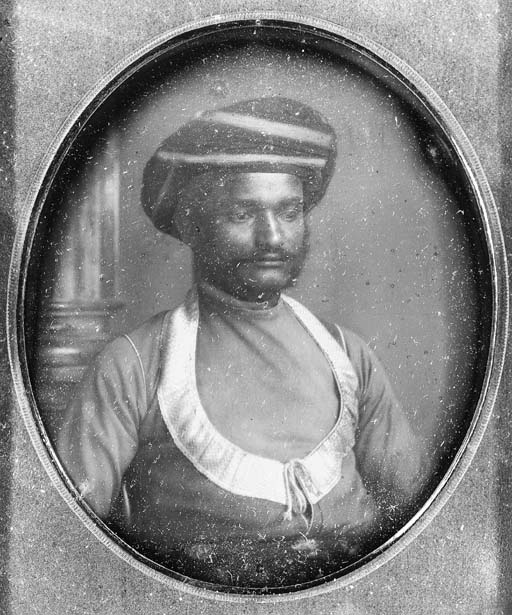John Henry Ravenshaw (1833 – 1874), was an employee of the Bengal Civil Service, a photographer and the Magistrate and Collector, of Malda district of Bengal between 1865 and 1867. During this tenure, he got interested in documenting and photographing the ruins of Gaur City. The ruins of the fortified city of Gaur are located on the India-Bangladesh border in the Malda district and are considered to be one of the most prominent capitals in classical and medieval Indian subcontinent. Gaur City was previously known as Lakshmanavati or Lakhnauti. It was an ancient capital of Bengal, a seat of the Buddhist Pala dynasty from the 8th century and later the Hindu Sena dynasty from the 12th century.
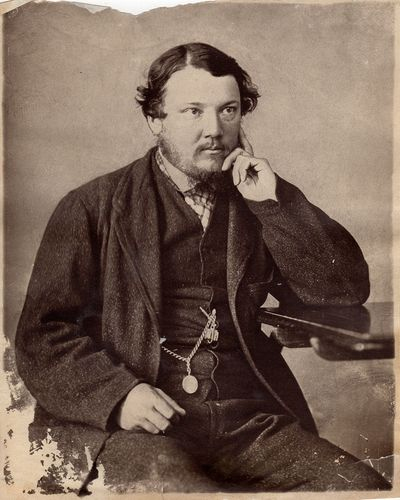
John Henry Ravenshaw explored at leisure the extant remains of the old capital of Bengal, and photographed the most prominent, best-preserved and concealed ruins in the dense jungle. Ravenshaw quoted his visits to these monuments as “a lamentable wreck of its former elegance and grandeur.”
Ravenshaw departed from amateur exploration into a more systemic engagement with historical ruins, visually documented architectural views to build a colonial archive of lost City: Gaur.
His fine architectural views are reproduced in a book titled “Gaur, Its Ruins and Inscriptions” which contains 45 photographs and maps. The book remained unpublished, until his death in 1874 in London. The book was compiled and published in 1879 in his memory by his widowed wife Caroline.
“Gaur, Its Ruins and Inscriptions” is considered to be one of the most rarest of books with tipped-in photographs, of which only a handful of copies are known to be in existence. The book contains 41 Woodburytype plates and 2 folding maps.
John Henry Ravenshaw mastered the art of Woodburytype, a process which is considered to be the most perfect photomechanical reproduction. Woodburytype was invented by Walter Bentley Woodbury, pioneering English photographer in Australia and the Dutch East Indies. The Woodburytype was the first commercially practical photomechanical technology for printing photographs with ink. It is based on the light sensitivity of the dichromated colloid combined with an intaglio printmaking process called the nature print in which a natural specimen is pressed into a lead plate which is then inked and printed.
The Woodburytype impression is filled with pigmented gelatin which is then transferred to paper support with a special press. It is the only photomechanical process that achieves the continuous tone found in true photographs and as a result can be difficult to distinguish from true photographs, particularly the carbon process.
By the 1870s, photographic illustration had become standard with the appearance of the photomechanical print Woodburytype allowing a cheaper type of photographic process to be used. Photographs were published as smaller books with more text Instead of large portfolios or Albums.
In addition to all of these practical factors, the Woodburytype process produces the best rendition of the photographic tone of any mechanical technology. This leads to it being highly valued by photographers and artists as well as commercial printing houses. It was used widely in England and continental Europe, and briefly in India, Australia and North America.
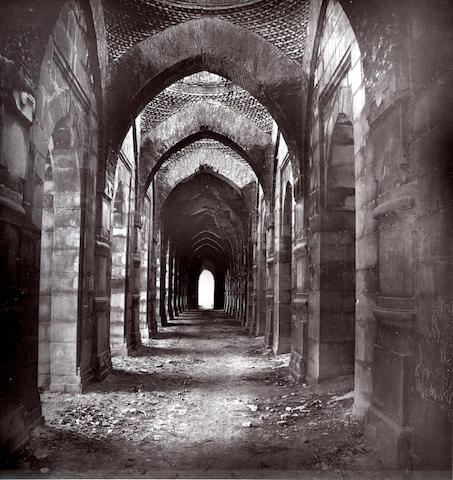
Reference
https://www.bl.uk/onlinegallery/onlineex/apac/photocoll/g/019pho000000978u00008000.html
https://www.bonhams.com/
http://www.graphicsatlas.org/identification/?process_id=38
Gaur as ‘Monument’: The Making of an Archive and Tropes of Memorializing, Parjanya Sen


